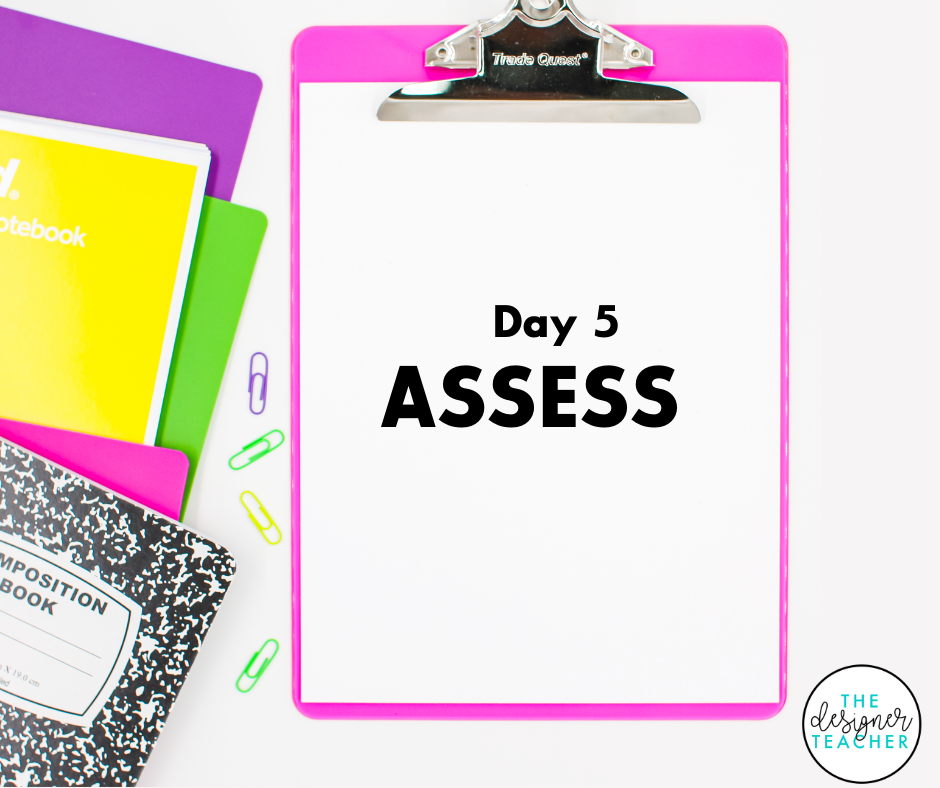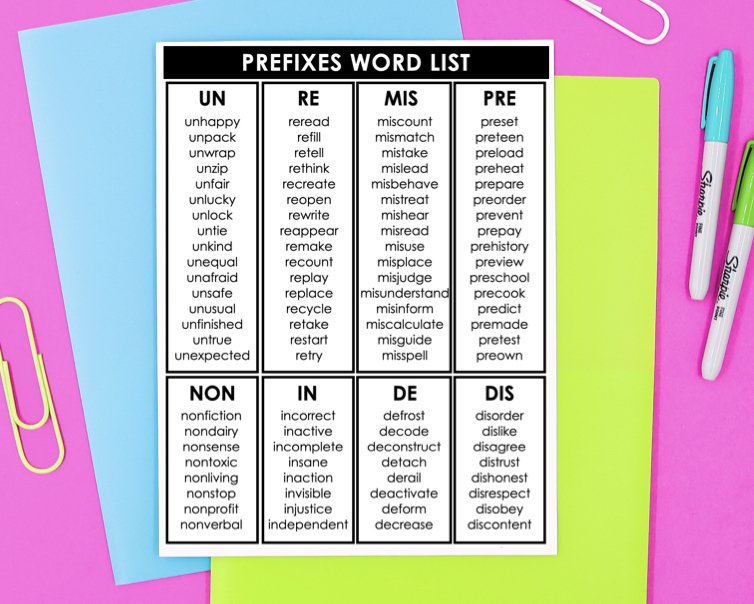How To Teach Prefixes
Prefixes can seem intimidating, but once students learn their meanings, they’ll be able to read and understand so many more words. Prefixes are letters that are added before a word that change its meaning. While there are more, I typically cover un, re, mis, pre, non, in, dis, and de, which are the most common.
As a special education teacher, I find that introducing one or two prefixes a week works well. If you’re teaching general education, you may find that you’re able to progress more quickly. I follow the same general lesson plan for phonics each week, which is easier for both you and your students. In this post, I’ll use the prefix un for examples and explain how I would teach words with un over the course of one week. You can follow the same structure when teaching other prefixes.
Day 1
Explain to students that prefixes are letters that are added before a word that change its meaning. We call the original word a base word. Different prefixes mean different things. Using the poster, explain that the prefix un- means “not” or “the opposite of.” Show an unlock word card or write the word. Model noticing the prefix un and the base word lock. Note that this means the word will mean “not lock” or “the opposite of lock.” To unlock means to do the opposite of lock. Find the matching definition card or write the definition. Repeat with unsafe word card, again noting the prefix and the base word, and finding the matching definition card or writing the definition. After modeling, lead students in guided practice of reading and defining more words with the prefix un. Then, practice reading fluency sentences together that contain words with un. You can find the needed word cards, definition cards, and fluency sentences in my Phonics by Design Prefixes Unit.
Day 2
Briefly review what you taught yesterday, and then tell students they’ll be practicing writing and understanding words with the prefix un today. Read the definition “not kind, mean.” Note that because un- means not, the matching word is unkind. Sound out and spell unkind on chart paper or a whiteboard, noting the prefix and the base word. Repeat with unpack. Continue with other un words, having students identify the words and spell them. Finally, have students practice on their own by telling them definitions and having them write down the word with that meaning. For example, you would say “the opposite of wrap,” and students would write “unwrap.” You can also dictate a few short sentences that include words with the prefix un.
Day 3
Today students will independently practice reading, writing, and defining words with the prefix un-. I use the activity sheets included in my Phonics by Design Prefixes Unit and in my No Prep Pack.
Day 4
Review the meaning of un- before introducing a simple prefix matching game students can play in pairs. Spread out the cards in a grid face down. When it’s their turn, the student will turn over two cards and read the words and/or definitions. If it’s a match, they keep the pair. If not, they put the cards back, face down. Students alternate turns until all pairs have been matched. The student with the most pairs wins. You can find prefix matching games in my Phonics by Design Prefixes Unit.
Day 5
Assess students by reading the definition of ten words with un- and having them record the words. If you have time and a small enough group, you may also wish to have individual students read a few words with un- for you as well.
This lesson plan schedule for teaching prefixes is simple but effective!
Save yourself time by snagging everything you need to teach prefixes in one place with my Phonics by Design Prefixes Unit Bundle. You’ll get all the materials mentioned in this post for each prefix (word cards, definition cards, fluency sentences, activity sheets, matching game), plus posters, flap books, and more! Snag it here.
Need a prefixes list?
Snag this list of prefix examples for FREE by signing up for The Designer Teacher mailing list below!
No time to read now?








